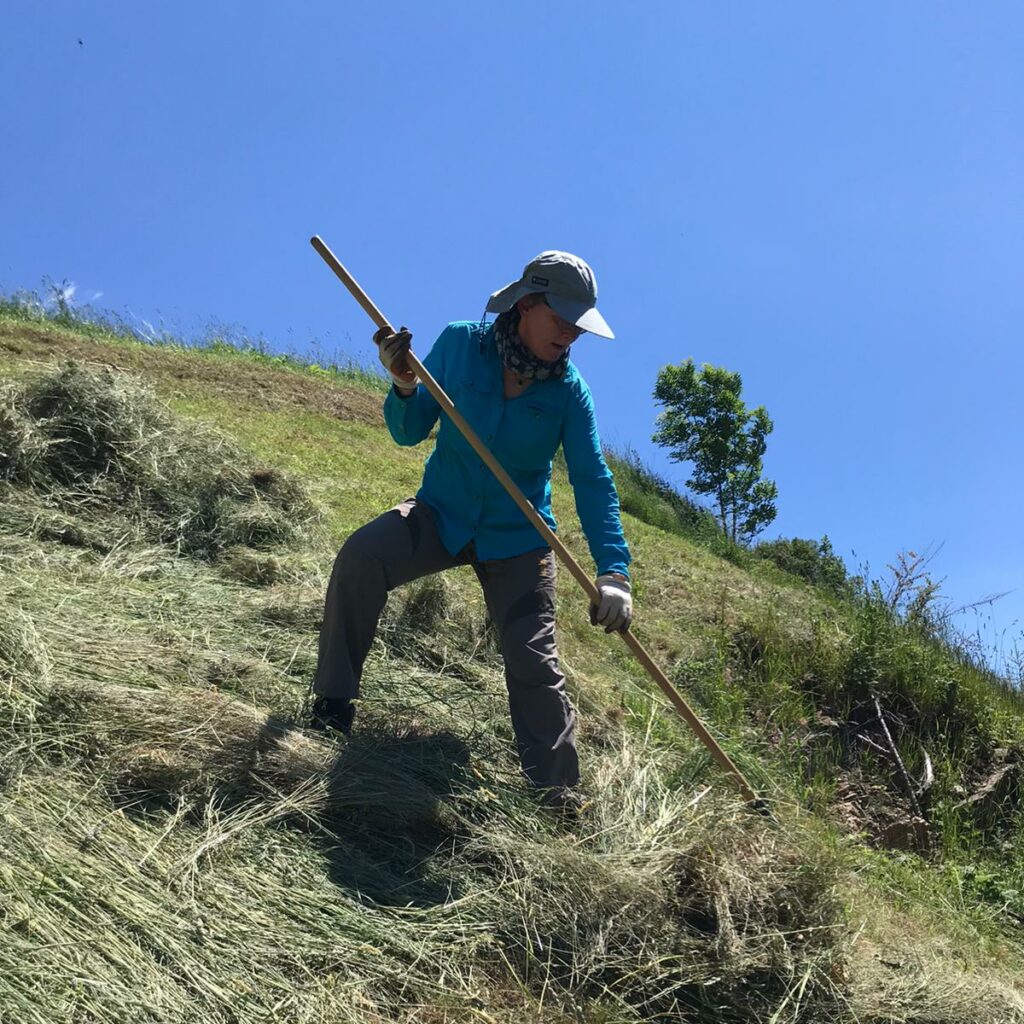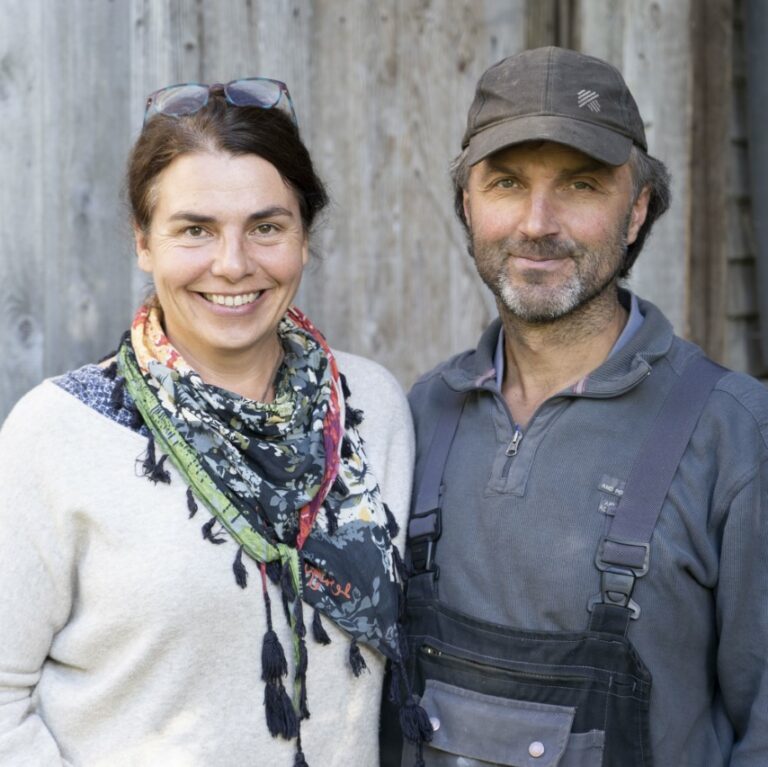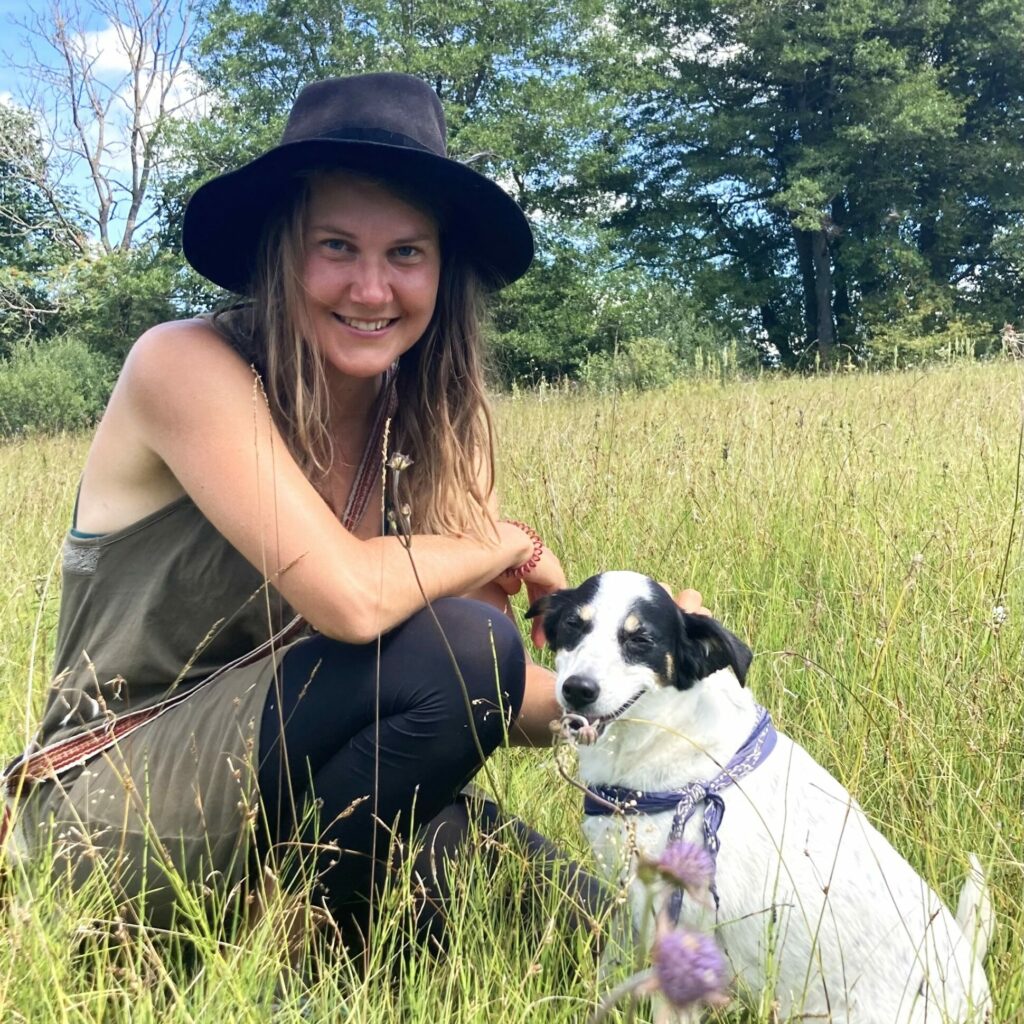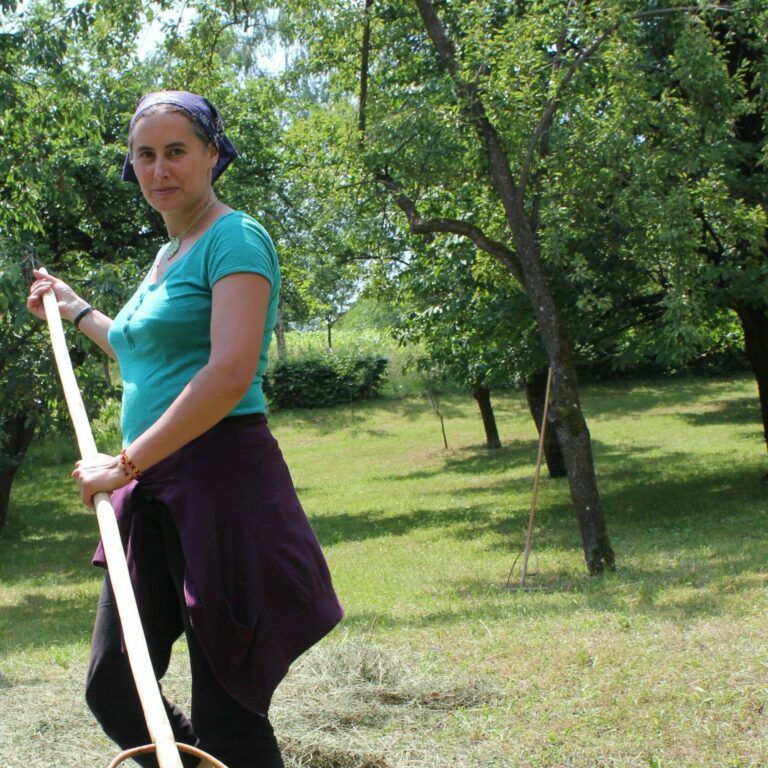the network
Almut Schneider
My interest in grasslands and their interconnections with animals, people, insects and soil stems from my current anthropological fieldwork with high altitude farmers in the alps. For understanding these more-than-human networks,
I use the comparison with my former research in the Highlands of Papua New Guinea, where I focussed on forest gardens as junctions of social relationships. The Alpine farmer’s cattle, mainly cows but also sheep and goat depend on the grass their land provides.
They observe their land closely – most of it serves as hayfields to be harvested in the short summer months to fill the barn for the rest of the year, some of it serves as pastureland for the cattle during summer. This relative intensive, monocultural usage of the land is a recent development of the last sixty years, when these high-lying farms were connected, via the production of milk, to the nationwide market. Farmers must keep a delicate balance between gathering as much hay as possible while not over-fertilizing and exhausting the fields. The loss of species that follows the heavy use of land and grass is problematic for the whole network: cattle receive less nutrients through the impoverished grass, farmers have expenses through buying more concentrated feed and hay to compensate for this loss, insects and microbes in the soil loose much of their livelihoods. I am interested in this local network of grassland ‘entanglements’ (Tsing 2015) along a “chain of relations” that allows to look beyond Alpine grasslands and to relate extra-local issues back to them.

Elisabeth Tauber
I look at grasslands though an ethnographic lens under which they unfold as complex universes in which grass, wild and domesticated grazing animals, soils, microbes, insects, humans, industrial agriculture, and global markets are interrelated. This interrelation has become an important body of enquiry in my field research with shepherds in the Italian Eastern Alps. High alpine pastoralism in the European Alps is undergoing constant changes related both to the decline of grazing animals and the return of large carnivores to the Alps and, on the other hand, to new herding practices seeking a new balance between the different actors.
Within this assemblages, high alpine grass, one of the often-overlooked agents that has lost value to imported concentrates and highly fertilised forage meadows, has become one of my main concerns.
The loss of sensitive grass species is part of a chain of reactions followed by the absence of animals and their guardians. Just as the assiduous regrowth of grass is part of a chain reaction when attentive herders lead their animals across grasslands. As a social anthropologist I hike over high alpine grasslands with a focus on their local and global networks keeping up a dialogue with herders, officials, farmers, ranchers, committed citizens, fodder producers, breeders, foresters, and scientists.
Christine Bajohr
We are the 4th generation to run our mountain farm in the Oberallgäu (Bavaria). About 10-15 years ago, we realized that we could no longer continue with traditional farming methods, especially in view of the increasing weather extremes, and so we set out to find new solutions.
Over the years, one of the things we have discovered and come to appreciate is a holistic grazing strategy (Holistic Planned Grazing) that helps us improve basic ecosystem processes to restore our land to a more resilient state. To get more answers to the many questions that emerged along our regenerative land management pathway, we founded the Operational Group Grassland (OG-Grünland) together with other dairy farmers and scientists, and in 2020 launched the EIP-Agri on-farm-research project called KUHproKLIMA (Cows for Climate).
Franziska Hanko
Grassland ecosystems, naturally evolved or as ancient traditional cultivated lands, bear a great diversity of species, structures and processes. Complex ecosystems such as species-rich grasslands, semi-natural pastures, and semi-open landscapes demonstrate that periods of heat as well as heavy rain events can be better buffered and overall biomass can be maintained. Grasslands, with all their ecosystem services, have been significantly shaped by ruminants. Without them it cannot be the same. Diverse grasslands harbor unimaginable amounts of microorganisms that collectively hold water, store carbon, and create resilience. In my research, I have found that grazing animals can turn grasslands into biodiversity hotspots through footfall, bite, movement, selection, saliva, and excrement when managed adaptively by humans.
The key here is: the right animal, in the right place at the right time! The microbiome of the pan is related to that of the soil and they complement each other just as the diversity of pollinators does with plants. All this is interrelated and is visible in animal health, milk quality and stability of excrements. In the project KuhproKlima, we study all these processes, and I focus on insect structures, plant diversity and woody plants. Resilience comes from the highest diversity possible, continually observing and adapting dealing with the various systems. My degree in forestry and a master’s degree in engineering ecology provided me with a holistic overview of ecosystems. My greatest concern is not only to continue to explore how grassland processes work and how we can adapt them, but also to make visible the value of nature itself. In addition to my vocation as an ecologist, I am a wilderness educator working with children, youth and adults, and sharing my enthusiasm. Sometimes the greatest beauty lies in the very simple things and observations. And sometimes I don’t even have to figure out why that is but just enjoy being part of the whole.
Ana Iuga
All my childhood I spent the summer harvesting hay with my grandparents. It did not seem to be a threatened practice at the time, as all the people I knew from the village were doing the same thing. It was later on, while I was following a MA program, 17 years ago that I became interested in hay as a research topic, being interested in the, what was for me very familiar, knowledges concerning grasslands in the villages from the Romanian Carpathian Mountains. First, I turn my concern on the material culture of hay (tools, shapes of haystacks etc.), but mostly on the intangible cultural heritage concerning hay:
Memoratae (narratives) about the hay-taboos for several religious feasts, when working in the meadows is forbidden (all these feasts were held during the summer, and they echoed the legends that my grandmother used to tell me as a child); traditional ecological knowledge concerning the hay meadows management, as explained by people from various ages; the contemporary situation of grasslands (hay meadows, pastures) management; changes that appear over time, especially due to the socio-economic changes (such as abandonment of meadow management, the influence of incentives).
In time I have had the opportunity to work together with biologists, botanist, ecologists and historical ecologists from Romania, Sweden, Slovakia, and Austria. Their perspective helped me look at the meadows with fresh eyes, understanding that it is a research area that needs to be seen from different angles in order to have an overview and to perceive the complexity of the grassland management.

Max Muster
Lorem ipsum dolor sit amet, consetetur sadipscing elitr, sed diam nonumy eirmod tempor invidunt ut labore et dolore magna aliquyam erat, sed diam voluptua. At vero eos et accusam et justo duo dolores et ea rebum.

Max Muster
Lorem ipsum dolor sit amet, consetetur sadipscing elitr, sed diam nonumy eirmod tempor invidunt ut labore et dolore magna aliquyam erat, sed diam voluptua. At vero eos et accusam et justo duo dolores et ea rebum.

Max Muster
Lorem ipsum dolor sit amet, consetetur sadipscing elitr, sed diam nonumy eirmod tempor invidunt ut labore et dolore magna aliquyam erat, sed diam voluptua. At vero eos et accusam et justo duo dolores et ea rebum.

Max Muster
Lorem ipsum dolor sit amet, consetetur sadipscing elitr, sed diam nonumy eirmod tempor invidunt ut labore et dolore magna aliquyam erat, sed diam voluptua. At vero eos et accusam et justo duo dolores et ea rebum.


